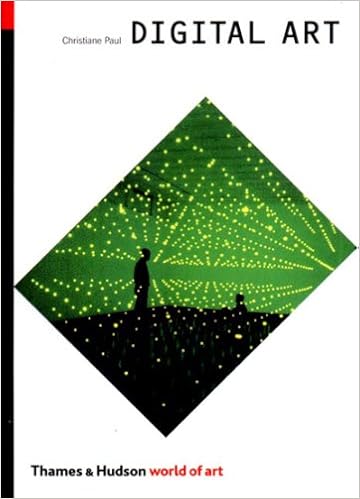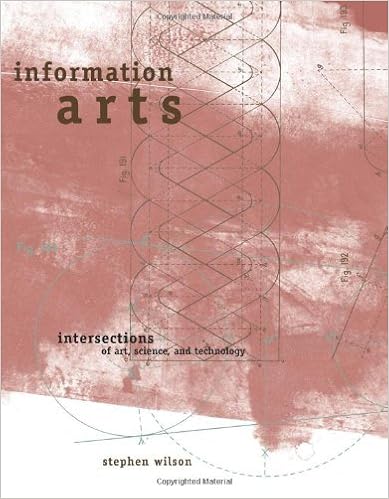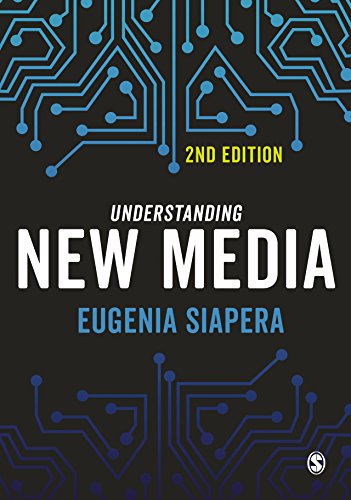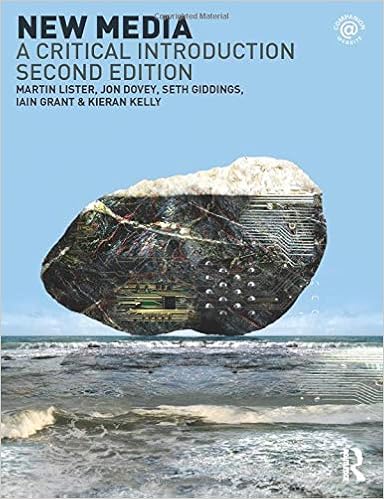

Christiane Paul’s Digital Art offers a comprehensive survey of how digital technology has transformed artistic production and experience since the early 1990s. She distinguishes between digital tools applied to traditional media and works that employ digital technology as a medium in its own right, including net art, software art, VR, and interactive installations. Paul highlights key artists and practices while examining themes such as interactivity, artificial life, activism, networks, and telepresence. The book also addresses challenges of collecting, preserving, and exhibiting digital works, considering issues of ownership, copyright, and the rise of the virtual museum. Richly illustrated throughout.

In this rich compendium, Wilson offers the first comprehensive survey of international artists who incorporate concepts and research from mathematics, the physical sciences, biology, kinetics, telecommunications, and experimental digital systems such as artificial intelligence and ubiquitous computing. In addition to visual documentation and statements by the artists, Wilson examines relevant art-theoretical writings and explores emerging scientific and technological research likely to be culturally significant in the future. He also provides lists of resources including organizations, publications, conferences, museums, research centers, and Web sites.

This reader collects the texts, videos, and computer programs―many of them now almost impossible to find―that chronicle the history and form the foundation of the still-emerging field of new media. General introductions by Janet Murray and Lev Manovich, along with short introductions to each of the texts, place the works in their historical context and explain their significance.

"Art and Electronic Media" by Edward A. Shanken is a comprehensive exploration of the integration of electronic technology into the arts since the 1960s. The book delves into the relationship between art, technology, science, and culture, providing a historical context for the rise and evolution of electronic art.
Throughout the book, Shanken provides insights into the key artists, movements, and artworks that have shaped the field of electronic art. He also examines the challenges and opportunities presented by electronic media, considering issues of preservation, representation, and the role of institutions in supporting and exhibiting electronic art.

Critical Terms for Media Studies, edited by W. J. T. Mitchell and Mark B. N. Hansen, provides a vital reference for understanding contemporary media’s language and concepts. Bringing together essays from leading scholars, the volume redefines key terms across three interrelated areas: Aesthetics, which addresses sensory experience and judgment; Technology, which introduces concepts shaping media’s material forms; and Society, which examines systems enabling media to function. Bridging communications, philosophy, film, digital culture, and politics, the collection illuminates debates at the heart of media studies. It offers a rigorous yet accessible framework for analyzing the cultural, technological, and social dimensions of media today.

Marshall McLuhan’s insights into media remain strikingly relevant in the digital age. He argued that media affect every aspect of human life—personal, political, social, and psychological—reshaping us beyond awareness. While mainstream media may appear pleasurable and relaxing, McLuhan warned that this comfort conceals deeper tensions, producing what he called an “Age of Anxiety,” where technology and society evolve at uneven speeds. His claim that societies are shaped more by the form of media than by their content resonates strongly in today’s internet-saturated culture. As digital technologies proliferate, McLuhan’s work continues to illuminate the pervasive power of media environments.

The thirtieth-anniversary edition of Marshall McLuhan’s Understanding Media (1964–1994) revisits one of the most influential texts in media theory. Introducing phrases like “the global village” and “the medium is the message,” McLuhan revealed how media shape perception and society beyond their content. This reissue, with a new introduction by Lewis Lapham, contextualizes McLuhan’s ideas within the rapid technological, political, and cultural changes of the late twentieth century. Renewed interest in his work arises from developments such as cable–telecom mergers, Wired magazine, and MIT’s Media Lab, showing how McLuhan’s provocative insights continue to redefine media and communication today.

Kevin Kelly’s Out of Control: The New Biology of Machines, Social Systems, & the Economic World explores the rise of complex, decentralized, and self-organizing systems that increasingly resemble living organisms. Blending insights from biology, technology, and economics, Kelly argues that evolution, emergence, and collective behavior now drive both natural and artificial systems. From ecosystems and immune systems to computer networks, robotics, and global markets, he demonstrates how interconnected agents create adaptive intelligence without central control. Written in the early internet age, the book foresaw today’s distributed technologies, offering a visionary framework for understanding autonomy, complexity, and the future of life-like machines.

The Cybercultures Reader brings together articles covering the whole spectrum of cyberspace and related new technologies to explore the ways in which these technologies are reshaping cultural forms and practices at the turn of the century. The reader is divided into thematic sections focussing on key issues such as subcultures in cyberspace, posthumanism and cyberbodies and pop-cultural depictions of human-machine interaction.

Media critics remain captivated by the modernist myth of the new: they assume that digital technologies such as the World Wide Web, virtual reality, and computer graphics must divorce themselves from earlier media for a new set of aesthetic and cultural principles. This text offers a theory of mediation for our digital age that challenges this assumption.

The new media landscape touches every aspect of our social, political and cultural lives. It is more important than ever, therefore, that we are able to understand and explain the complexity of our digital world. Understanding New Media gives readers the tools and the knowledge they need to make sense of the relationship between technologies, media and society.
